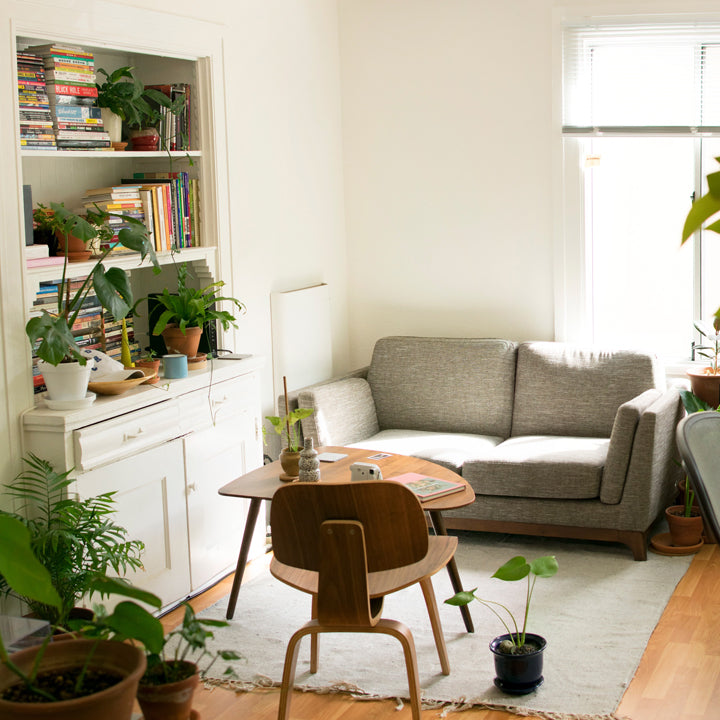
10 House Plants to Brighten Up Your Home this Winter
With winter in full swing here in Michigan, and that means more time indoors snuggling with the pups. In fact, we currently have about 12 inches on the ground here, and I feel like It’s going to be a while before we see any green leafy things outside. If you’re in the same boat, tide yourself over during these seemingly lifeless winter months with some house plants. They’re quiet, relatively inexpensive, require minimal maintenance, have been shown to reduce stress, and they even clean the air for you - I wish my dogs could do all that! Here are 10 of my favorite house plants for brightening up your home on a dreary day plus some tips for keeping them alive throughout the winter months and beyond.
Fiddle Leaf Fig

Perhaps possessing the most beautiful, lush leaves on this list, the Fiddle Leaf Fig is certainly a photogenic plant. It starts out as a bush, but can grow into a lush tree (a small one - don’t worry) if trained properly. Fiddle Leaf Figs enjoy bright indirect light, moderate amounts of water, and an occasional leaf dusting to keep it looking sharp. This is a relatively forgiving plant, so it’s great for beginner plant parents.
Spider Plant
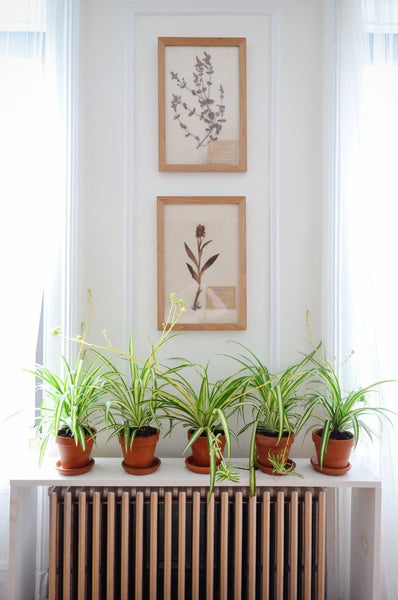
Spider plants are great air purifiers plus they’re super easy to take care of. It prefers bright indirect light, and moderate amounts of water. Watch the leaf tips - if they start to brown, then try watering with some collected rainwater (or melted snow) because they can be sensitive to the added fluoride in tap water. A pro tip for cat owners - the Spider Plant is non-toxic and harmless, but it is mildly hallucinogenic to cats.
Snake Plant
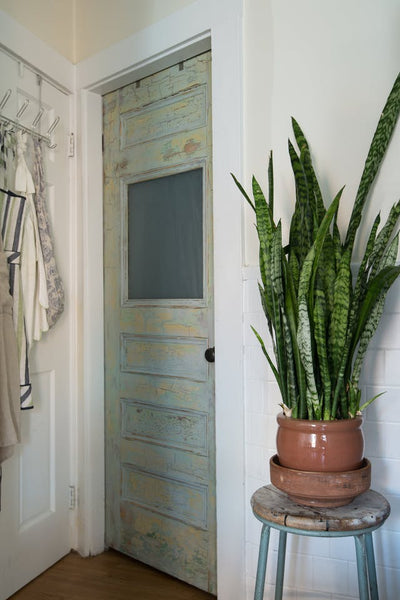
The Snake Plant has beautiful, tall leaves and it loves all kinds of light conditions - low, bright, indirect, fluorescent, all of the lights! It requires very little water, so it’s perfect for the forgetful plant owner. It is awesome at converting CO2 to O2, so if you’re in the market for an air purifying powerhouse, this is the plant for you.
English Ivy
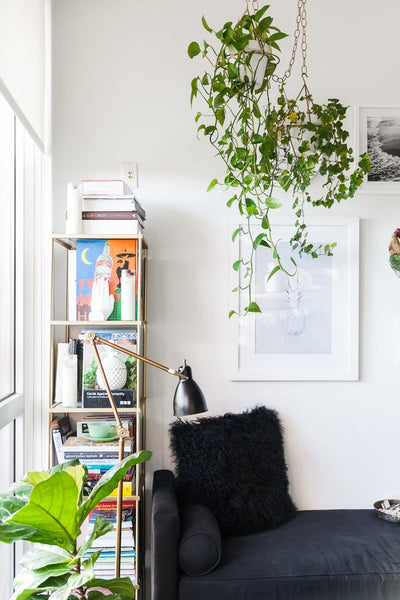
English Ivy has very distinctly shaped leaves that look lovely as they hang down from higher perches. It is a very forgiving plant which prefers drier soil, so make sure the top of the soil is dry before watering. It’s a fan of all kinds of light and won’t mind an occasional cold draft (how very English), which makes it one of our favorite winter pick-me-ups.
Peace Lily

The Peace Lily is a very popular house plant because of its gorgeous flowers, beautiful foliage, and superior air cleaning abilities. If you’re a fan of low maintenance and forgiveness, then the Peace Lily is the house plant for you. Peace Lilies will droop when they want water, so you never have to wonder if it’s thirsty or not. It loves the gamut of light qualities from low to bright, but is not a fan of direct light. Just keep your Lily away from windows and you’re golden.
Rubber Plant

Rubber Plants have big, green leaves that add a lush freshness to your winter home. Like most houseplants, Rubber Plants like moderate watering and bright indirect light. It’s a nice and easy plant to care for, and other than an occasional dusting of it’s leaves, it’s happy just to be inside brightening your home.
Weeping Fig

If you keep your home at about the same temperature all of the time, year-round, then the Weeping Fig is your best plant friend. This plant does not like change - don’t change the temperature too much, and don’t move it around your home and you’ve got a happy camper in the Weeping Fig. It likes bright indirect light and moderate water.
Bird of Paradise
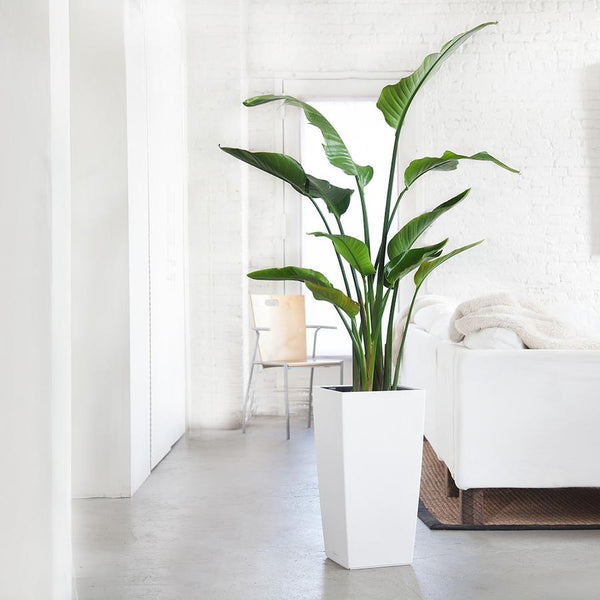
As far as flowering house plants go, the Bird of Paradise is one of the most beautiful. Year round, it rewards you with lush foliage, but it really puts on a show when it blooms. Bright light is what this plant lives for, so don’t hide it away in a corner. It goes somewhat dormant in winter, so it requires less water than in the summer months when it drinks up plenty of water. This plant can grow to over 5 feet tall in the right pot and conditions, so make sure you have the space or are prudent with trimming.
Boston Fern
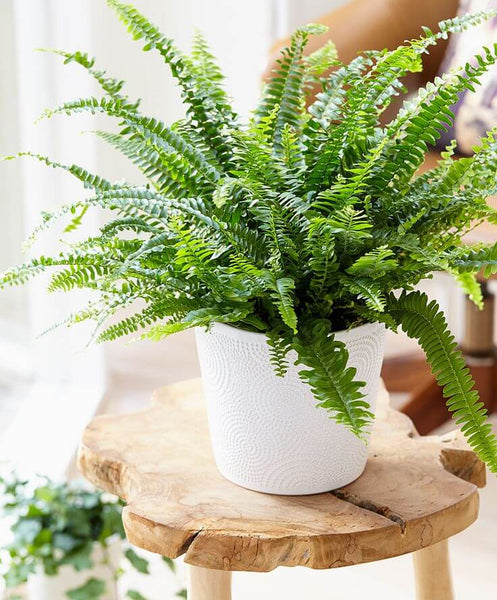
The Boston Fern loves a humid environment, but don’t let that deter your in the winter months. A bit of misting from a spray bottle will keep this plant happy through the drier months, and be sure to keep the soil moist. It will tell you it needs more humidity when it’s leaves begin to yellow. It grows best in bright, indirect light.
Jade Plant
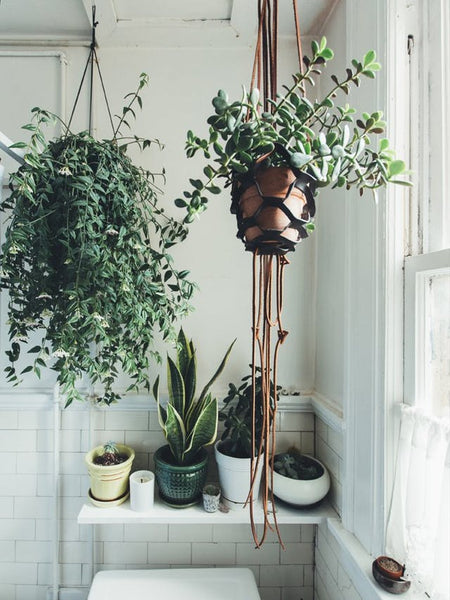
And for those of you who just can’t seem to keep anything green alive, the Jade Plant is for you. Jade Plants are succulents - meaning they thrive on very little water. They are dormant in the winter, so you can let their soil get pretty dry in between waterings. In the summer time it will require more water. Their leaves will let you know if they need more water - full, glossy leaves are happily watered. If the leaves start to spot or begin to fall off, then you need to water the plant a bit more. In spite of the little water they need, Jade Plants manage to grow as happy-looking, cheery house plants.
Now, a lot of house plants are moderately toxic to pets, so if you have furry friends you need to train them to stay away from the plants or keep the plants out of reach. For the more stubborn or slow-to-learn pets, stick to only non-toxic plants like the Boston Fern and Spider Plant.
As a general rule for most house plants, they like bright indirect light. Most of the plants on this list require moderate water which means watering 1-2 times per week depending on the plant, how much you water at one time, and the relative humidity in your home. I like to set a reminder on my phone for once every week to keep me on top of my plant watering. If you’re not sure if it’s time to water yet, stick your finger in the soil about one inch deep. If it’s dry then give it some water, if it’s still moist, then hold off on the water for now. Another indication of when or how much to water is the plant’s leaves - if they turn yellow or brown it’s due to under or over watering. If you’re ever in doubt about a symptom or need more info on when to trim, fertilize, re-pot, or anything else, just google your plant’s species and you’ll find plenty of help.

